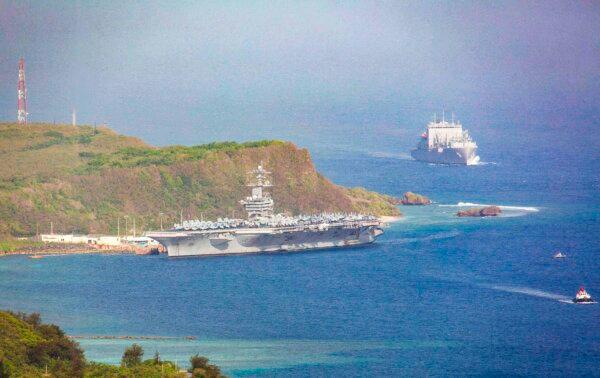Report: Chinese Missiles Pose Threat to US Indo-Pacific Air Bases
The report stated that Chinese missiles could potentially delay U.S. responses in the region if a conflict erupts.
A foreign affairs think tank based in Washington has indicated that U.S. air bases in the Indo-Pacific region are susceptible to missile attacks from China.
The authors of the report developed a model to assess the duration for which U.S. air bases could be non-operational if their runways and taxiways are rendered unusable. This model considered factors such as Chinese missile capabilities, missile defense systems of the U.S. and its allies, and the time required for runway repairs.
Based on the findings, attacks on runways in Japan could hinder the takeoff of fighter jets for up to 280 hours, equivalent to 11.7 days at the start of a conflict.
Additionally, in the case of runway damage, China could impede U.S. combat operations for an extended period as tanker jets, essential for mid-air refueling, would remain grounded for over a month (33.3 days).
Japan is situated within the first island chain, a series of Pacific archipelagos extending from Japan in the north to Indonesia in the south, making it a strategic location.
According to the report, attacks on runways in Guam and Pacific Islands could ground fighter jets for 1.7 days and tankers for 4 days.
The report highlighted that such runway closures could force U.S. bombers to operate from bases in Australia, Hawaii, or Alaska at the onset of a conflict, leading to longer flight times and reduced bomber sorties.
The authors recommended that the U.S. military invest in a large number of affordable drones, long-range precision weapons, and improved runway repair capabilities to mitigate the effectiveness of potential attacks by China.
Furthermore, they suggested enhancing partnerships with allies to ensure access to their airports for U.S. military use in the event of a conflict with China.
The report acknowledged the efforts of the U.S. Air Force in developing a Rapid Airfield Damage Recovery (RADR) program to quickly restore runways post-attack and maintain operational readiness for numerous sorties.
While the RADR capability of the U.S. military has improved, the report cast uncertainty on whether it could adequately recover sortie generation in a military confrontation.
The Epoch Times sought comments from the Department of Defense regarding the findings.
The Department of Defense is allocating significant resources through the Pacific Deterrence Initiative to enhance airfields and air bases in the region and counter Chinese threats in the Indo-Pacific.

The aircraft carrier USS Theodore Roosevelt is docked at Naval Base Guam in Apra Harbor amid the coronavirus pandemic on April 27, 2020. Tony Azios/AFP via Getty Images
The initiative includes the construction of the Guam Defense System, an advanced integrated air and missile defense system safeguarding Guam from various missile threats.
Efforts to enhance airfields in Tinian, Guam, Saipan, and Palau within the second island chain, along with pilot training tailored for these airfields, are part of the initiative as well.
Various military strategic reports have recommended strategies like long-range precision strikes and the utilization of cost-effective, easily replaceable weapons such as drones and hypersonic missiles as alternative approaches.





